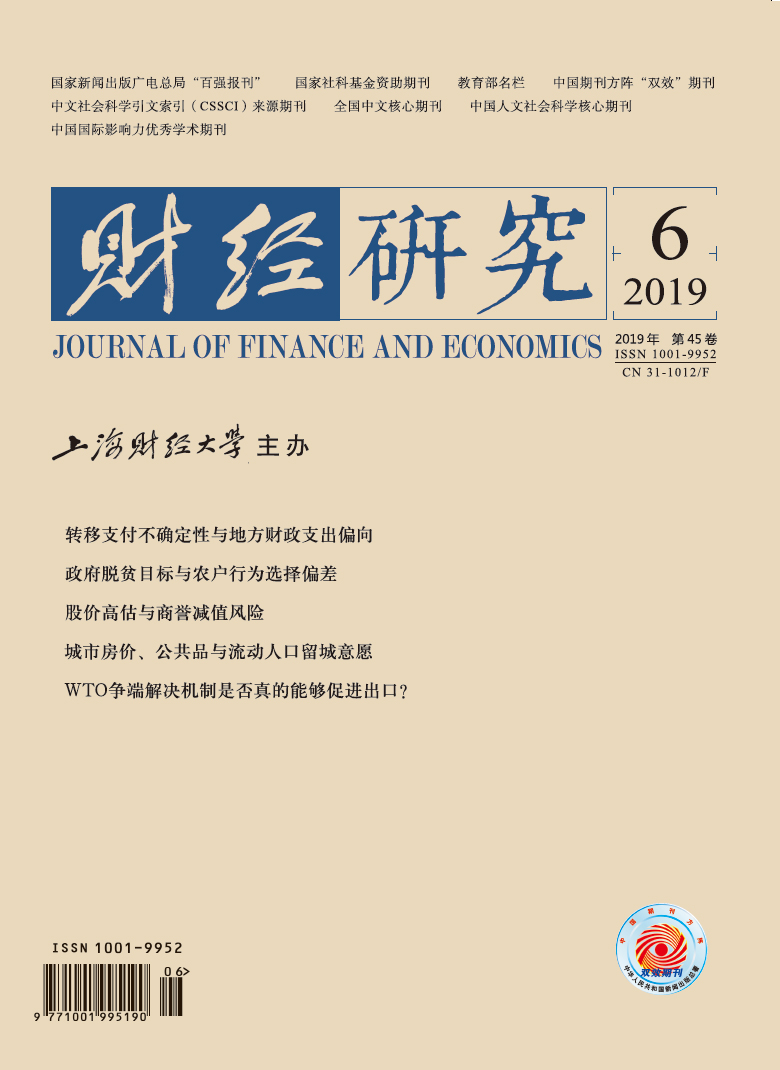在生育政策调整的背景下,我国已婚女性的劳动供给会发生变化,进而影响自身及子女的福利水平。文章基于儿童看护的视角,研究了与家中老人合住如何缓解已婚女性照顾幼年子女的压力,并探讨了对其劳动供给产生的影响。文章使用2011年中国家庭金融调查数据,考虑到居住模式选择与已婚女性劳动参与之间的内生性,使用特殊解释变量回归的方法,发现与家中老人合住可以显著提升我国已婚女性的劳动参与率,其幅度约为49%,这一结果可以理解为两者之间的因果效应。居住模式对我国已婚女性劳动参与的影响因幼年子女数量不同而呈现异质性,对有且仅有1个幼年子女的已婚女性而言,影响最明显。与老人合住同时会使我国已婚女性每周工作时间显著增加4个小时,其幅度约为8.26%。文章的研究揭示了我国家庭居住模式的新变化所带来的已婚女性劳动参与的改变,并为女性生育福利和劳动供给相关政策的制定和优化提供了参考。
居住模式、幼年子女数量与已婚女性的劳动供给——基于儿童看护视角的讨论
摘要
参考文献
1 陈璐,范红丽,赵娜,等. 家庭老年照料对女性劳动就业的影响研究[J]. 经济研究,2016,(3):176−189. DOI:10.3969/j.issn.1673-291X.2016.03.071
2 陈钊, 陆铭, 吴桂英. 经济转型中的婚姻家庭与女性就业: 对相关事实的经济学理解[A]. 张曙光, 邓正来. 中国社会科学评论[C]. 北京: 法律出版社, 2004.
3 杜凤莲. 家庭结构、儿童看护与女性劳动参与:来自中国非农村的证据[J]. 世界经济文汇,2008,(2):1−12. DOI:10.3969/j.issn.0488-6364.2008.02.001
6 马双,李雪莲,蔡栋梁. 最低工资与已婚女性劳动参与[J]. 经济研究,2017,(6):153−168. DOI:10.3969/j.issn.1672-5719.2017.06.127
10 姚先国,谭岚. 家庭收入与中国城镇已婚妇女劳动参与决策分析[J]. 经济研究,2005,(7):18−27. DOI:10.3969/j.issn.1002-5863.2005.07.008
14 Becker S G. A treatise on the family[M]. Cambridge: Harvard University Press, 1990.
15 Blanchard O J, Fischer S. Lectures on macroeconomics[M]. Cambridge, Massachusetts and London, England: MIT Press, 1993.
16 Dong Y Y,Lewbel A. A simple estimator for binary choice models with endogenous regressors[J]. Econometric Reviews,2015,34(1−2): 82−105. DOI:10.1080/07474938.2014.944470
17 Ettner S L. The impact of " parent care” on female labor supply decisions[J]. Demography,1995,32(1): 63−80. DOI:10.2307/2061897
18 Ettner S L. The opportunity costs of elder care[J]. The Journal of Human Resources,1996,31(1): 189−205. DOI:10.2307/146047
19 Jacobsen J P,Pearce III J W,Rosenbloom J L. The effects of childbearing on married women’s labor supply and earnings:Using twin births as a natural experiment[J]. The Journal of Human Resources,1999,34(3): 449−474. DOI:10.2307/146376
20 Joshi H E,Layard R,Owen S J. Why are more women working in britain?[J]. Journal of Labor Economics,1985,3(1): S147−S176. DOI:10.1086/298079
21 Killingsworth M R. Labor supply[M]. New York: Cambridge University Press, 1983.
22 Kolodinsky J,Shirey L. The impact of living with an elder parent on adult daughter’s labor supply and hours of work[J]. Journal of Family and Economic Issues,2000,21(2): 149−175. DOI:10.1023/A:1009426002699
23 Lewbel A. An overview of the special regressor method[R]. Boston College Working Papers in Economics 810, 2012.
24 Lewbel A,Dong Y Y,Yang T T. Comparing features of convenient estimators for binary choice models with endoge- nous regressors[J]. Canadian Journal of Economics,2012,45(3): 809−829. DOI:10.1111/caje.2012.45.issue-3
25 Michael R T. Consequences of the rise in female labor force participation rates:Questions and probes[J]. Journal of Labor Economics,1985,3(1): S117−S146. DOI:10.1086/298078
26 Mincer J. Labor force participation of married women: A study of labor supply[A]. Aspects of Labor Economics[C]. Princeton, New Jersey, USA: Princeton University Press, 1962.
27 Ogawa N,Ermisch J F. Family structure,home time demands,and the employment patterns of japanese married women[J]. Journal of Labor Economics,1996,14(4): 677−702. DOI:10.1086/209827
28 Oishi A S, Oshio T. Coresidence with parents and a wife’s decision to work in Japan[R]. Discussion Paper, 2004.
29 Pezzin L E,Schone B S. Intergenerational household formation,female labor supply and informal caregiving:A bargaining approach[J]. The Journal of Human Resources,1999,34(3): 475−503. DOI:10.2307/146377
30 Rosenzweig M R,Wolpin K I. Testing the quantity-quality fertility model:The use of twins as a natural experiment[J]. Econometrica,1980,48(1): 227−240. DOI:10.2307/1912026
31 Sasaki M. The causal effect of family structure on labor force participation among Japanese married women[J]. The Journal of Human Resources,2002,37(2): 429−440. DOI:10.2307/3069654
32 Smith J P,Ward M P. Time-series growth in the female labor force[J]. Journal of Labor Economics,1985,3(1): S59−S90. DOI:10.1086/298076
引用本文
孙继圣, 周亚虹. 居住模式、幼年子女数量与已婚女性的劳动供给——基于儿童看护视角的讨论[J]. 财经研究, 2019, 45(6): 57-70.
导出参考文献,格式为:






 6125
6125  10089
10089

